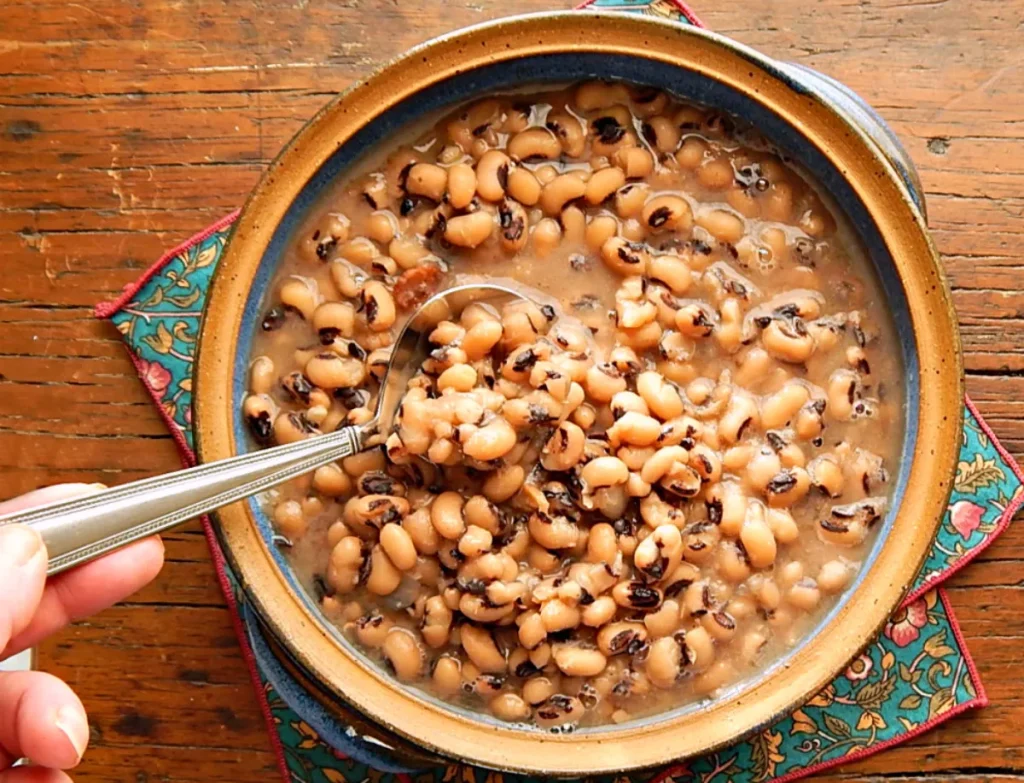Hey there, cooking enthusiasts! Ready to dive into the world of stove-cooked black-eyed peas? Let’s whip up some scrumptiousness right on your stovetop!

Why Cook Black Eyed Peas on the Stove?
Stove Cooking: Traditional and Convenient
Using the stovetop is a classic and convenient way to cook black-eyed peas. It’s a tried-and-true method that yields fantastic results.
Control and Versatility
Cooking on the stove gives you control over the cooking process, allowing you to adjust heat levels and seasoning to suit your taste preferences.
Preparing Your Black Eyed Peas
To Soak or Not?
Soaking black-eyed peas overnight can speed up the cooking process, but if you’re short on time, fear not! You can still cook them without soaking.
Rinsing the Peas
Before cooking, give the black-eyed peas a good rinse under cold water to remove any debris or impurities.
Cooking Black Eyed Peas on the Stove
Water to Pea Ratio
For every cup of black-eyed peas, use about 3-4 cups of water or broth. Adjust the liquid amount based on your desired consistency.
Flavorful Seasoning
Season your black-eyed peas with salt, pepper, garlic powder, or your favorite herbs and spices to elevate the taste.
Stove Cooking Method and Time
Boiling the Peas
Place the rinsed black-eyed peas in a pot and cover them with the measured liquid. Bring the pot to a boil over medium-high heat.
Cooking Time
Once boiling, reduce the heat to low, cover the pot, and let the black-eyed peas simmer for about 60-90 minutes until they reach your desired tenderness.
Serving Your Delicious Creation
Taste Testing and Final Touches
Once cooked, taste your black-eyed peas and adjust the seasoning if needed. You can add a pat of butter or a splash of vinegar for extra flavor.
Enjoying Your Dish
Serve your warm and flavorful black-eyed peas as a side dish, pair them with rice or cornbread, or add them to soups and stews for added heartiness.
Conclusion
Cooking black-eyed peas on the stove is a simple yet delightful way to create a comforting and nutritious dish. With a bit of patience and some seasoning, you can transform these humble legumes into a flavorful meal.
FAQs
1. Do I have to soak black-eyed peas before cooking them on the stove?
Soaking can speed up the cooking time, but it’s not mandatory. You can cook unsoaked black-eyed peas on the stove too!
2. Can I use chicken broth instead of water for cooking black-eyed peas?
Absolutely! Using broth adds extra flavor. Feel free to use vegetable or beef broth too.
3. Can I cook black-eyed peas faster on the stove?
Cooking time varies, but increasing the heat slightly may shorten the cooking time without compromising the taste.
4. How do I know when black-eyed peas are done cooking on the stove?
They’re done when they’re tender but still hold their shape. Taste test them to check for the desired tenderness.
5. Can I freeze cooked black-eyed peas for later use?
Yes, you can freeze them in airtight containers for up to 3 months. Thaw and reheat them when ready to use!

Hi there! I’m Astrid Ogley, a passionate foodie and avid cook. With a love for all types of cuisine, from classic comfort food to exotic international dishes, I’m always looking to expand my culinary horizons. Through this blog, I share my tips and inspiration for cooking delicious meals and exploring new flavors.
